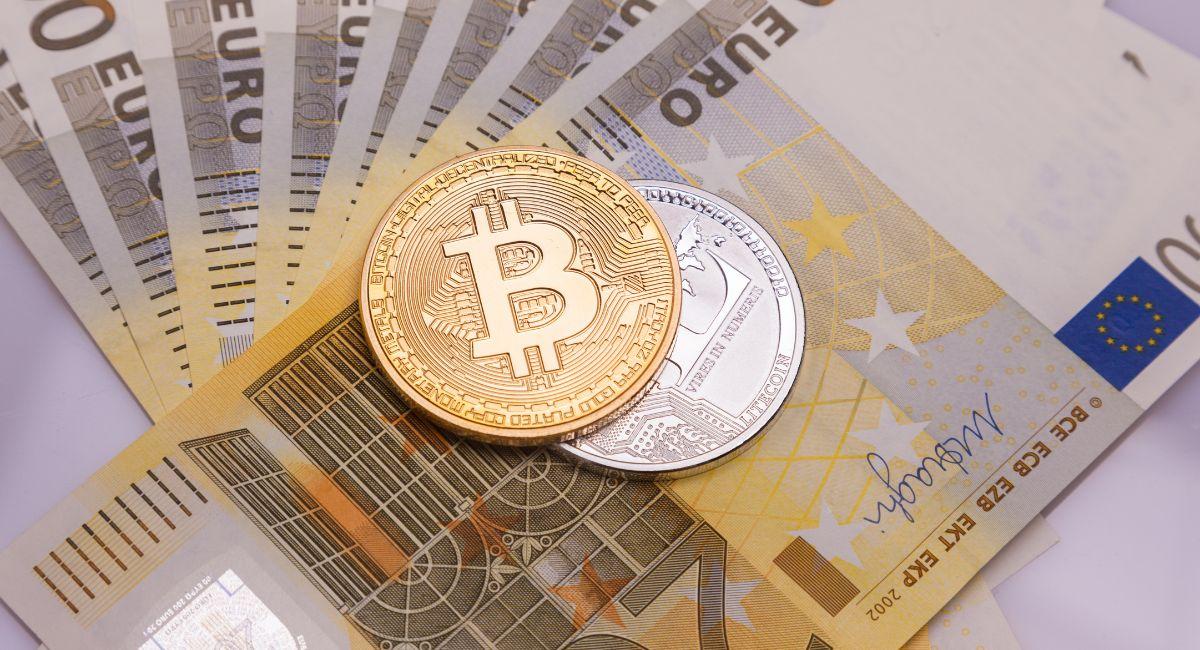Your Ultimate Guide To Bitcoin Halving And Its Top 7 Amazing Benefits

Bitcoin halving, a pre-programmed event occurring roughly every four years, refers to the periodic reduction of the reward miners receive for verifying Bitcoin transactions and adding new blocks to the blockchain. This mechanism is a crucial part of Bitcoin’s design, aiming to control the cryptocurrency’s inflation rate and maintain its scarcity over time.
When Bitcoin launched in 2009, miners received a reward of 50 Bitcoins for each block mined. This reward is halved every 210,000 blocks, which roughly translates to every four years. So, in 2012, the reward went down to 25 Bitcoins per block, then to 12.5 in 2016, and most recently to 6.25 Bitcoins in May 2020. The next halving is expected to occur around May 2024, further reducing the reward to 3.125 Bitcoins per block.
This halving mechanism plays a significant role in controlling the total supply of Bitcoin. With a finite cap of 21 million Bitcoins set in the code, the issuance of new Bitcoins slows down considerably with each halving event. This programmed scarcity is intended to make Bitcoin, similar to precious metals like gold, deflationary, meaning its value tends to increase over time due to its limited supply.
However, it’s important to remember that Bitcoin’s value is primarily driven by market forces like supply and demand, adoption, and speculation. While the halving event can influence the price due to its impact on supply, it’s not a guaranteed trigger for price increases. The future value of Bitcoin remains uncertain and depends on various complex factors.
Also, read- First-Ever ICO on Bitcoin Blockchain Launches in Under 2 Hours
Importance of Bitcoin Halving

It’s important to understand that the potential impacts of Bitcoin halving are multifaceted and not all positive. Here are 10 potential consequences to consider, both positive and negative:
Potential benefits:
- Reduced Inflation: The primary purpose of halving is to control inflation in the Bitcoin ecosystem. By limiting the number of new coins entering circulation, it aims to make Bitcoin more scarce over time, potentially leading to a higher value per coin (similar to scarce precious metals).
- Increased Security: As the block reward decreases, mining becomes less profitable, potentially attracting only serious miners with powerful hardware. This could strengthen the network’s security by making it more difficult for malicious actors to gain control.
- Enhanced Investor Confidence: The predictable halving schedule could boost investor confidence in Bitcoin’s long-term value proposition, potentially attracting more institutional investors and increasing demand.
- Positive Media Attention: Halving events often generate significant media coverage, raising public awareness and potentially attracting new users to the Bitcoin ecosystem.
- Potential for Increased Mining Efficiency: As miners receive fewer Bitcoins per block, they might be incentivized to become more efficient. This could lead to the development of more efficient mining hardware and techniques.
Potential drawbacks:
- Short-Term Price Volatility: The halving event itself might not directly guarantee an immediate price increase. In fact, there could be short-term volatility as the market adjusts to the reduced supply.
- Environmental Concerns: Bitcoin mining already faces criticism for its high energy consumption. With miners potentially needing more powerful hardware to maintain profitability, it could exacerbate environmental concerns.
- Centralization of Mining: As mining becomes less profitable, smaller miners might struggle to compete, potentially leading to increased centralization of mining power in the hands of larger players.
- Uncertain Long-Term Impact: The long-term impact of halving on Bitcoin’s price and overall ecosystem is still uncertain and subject to various external factors beyond the halving event itself.
- Potential for Speculative Bubbles: The anticipation of a price increase due to halving could lead to speculative bubbles, creating temporary price rises followed by potential crashes, harming long-term adoption.
Overall, Bitcoin’s halving remains a complex event with various potential consequences. While it aims to control inflation and potentially increase scarcity, it’s crucial to acknowledge both its potential benefits and drawbacks, understanding that the future of Bitcoin’s value remains heavily influenced by various market forces.
50 more days until the #Bitcoin halving & the global cryptocurrency market cap today is $2.07 Trillion a significant increase from $1.68 trillion in 2023.
— H0DL 🐳 (@hodl_CT) February 26, 2024
Welcome to the bull market Diamond Hands! pic.twitter.com/npZAcWHvRm
Role of Bitcoin Halving

The Bitcoin halving event plays several significant roles within the Bitcoin ecosystem:
- Supply Reduction: Bitcoin halving reduces the rate at which new bitcoins are generated, effectively decreasing the inflation rate and limiting the total supply of bitcoins over time. This scarcity is one of the fundamental factors contributing to Bitcoin’s value proposition.
- Market Expectations: The halving event is closely monitored by investors and traders, often leading to increased speculation and volatility in the Bitcoin market as participants anticipate its impact on price.
- Miner Incentives: Halving events directly impact Bitcoin miners by reducing their block rewards. This can influence miner profitability and may lead to changes in mining behavior, such as shifts in hash rate or adjustments to operational costs.
- Security: Despite the reduction in block rewards, the halving reinforces Bitcoin’s security model by maintaining the integrity of its decentralized consensus mechanism, Proof of Work (PoW). Miners are incentivized to secure the network through transaction processing and block validation, even as block rewards diminish.
- Price Dynamics: Historically, Bitcoin halving events have been associated with price rallies, as the reduction in new supply intersects with increasing demand, potentially driving up the price due to scarcity dynamics.
- Mining Difficulty Adjustments: Bitcoin’s mining difficulty adjusts approximately every two weeks to ensure that blocks are mined at a consistent rate. The halving event can influence these difficulty adjustments as miners adjust to changes in block rewards and market conditions.
- Network Congestion: Halving events may lead to increased network activity, including higher transaction volumes and congestion as users and traders engage with the Bitcoin network in response to market dynamics.
- Market Sentiment: The occurrence of a halving event often generates positive sentiment within the Bitcoin community, reinforcing long-term confidence in Bitcoin’s value proposition and its potential as a store of value.
- Long-Term Price Discovery: While short-term price movements around halving events can be volatile and speculative, the event also serves as a mechanism for price discovery, as market participants reassess Bitcoin’s fundamental value proposition in light of its reduced issuance rate.
- Economic and Monetary Implications: Bitcoin halving events are significant in the context of Bitcoin’s monetary policy, reinforcing its deflationary nature and positioning it as a hedge against inflationary pressures inherent in traditional fiat currencies and central banking systems.
Conclusion
The Bitcoin halving event stands as a pivotal moment within the cryptocurrency ecosystem, exerting profound effects on various facets of Bitcoin’s operation, market dynamics, and broader implications for the digital economy. As the cornerstone of Bitcoin’s monetary policy, the halving event fundamentally alters the supply dynamics of the cryptocurrency, reducing the rate at which new bitcoins are issued and imposing scarcity on the digital asset. This scarcity serves as a fundamental driver of Bitcoin’s value proposition, appealing to investors seeking a hedge against inflation and store of value in an increasingly uncertain financial landscape.
Beyond its immediate impact on supply and issuance, the halving event influences a range of interconnected factors within the Bitcoin ecosystem. It serves as a litmus test for miner incentives, challenging participants in the network to adapt their operations to changing reward structures while maintaining the security and integrity of the blockchain. The event also triggers speculation and market dynamics, as investors and traders anticipate its effects on price and adjust their strategies accordingly, often leading to heightened volatility and trading activity in the Bitcoin market.
Moreover, the halving event carries broader implications for Bitcoin’s role within the global economy and its potential to disrupt traditional monetary systems. By reinforcing Bitcoin’s deflationary properties and finite supply, the halving underscores its status as a decentralized alternative to government-issued fiat currencies, offering individuals and institutions an alternative store of value and means of exchange immune to central bank manipulation and inflationary pressures.
In conclusion, the Bitcoin halving event represents a cornerstone of Bitcoin’s monetary policy and ecosystem, exerting a multifaceted influence on supply dynamics, market sentiment, and the broader landscape of digital finance. As Bitcoin continues to mature and evolve, the halving event will remain a focal point for investors, technologists, and policymakers alike, shaping the trajectory of the world’s premier cryptocurrency and its role in reshaping the future of money.




























































